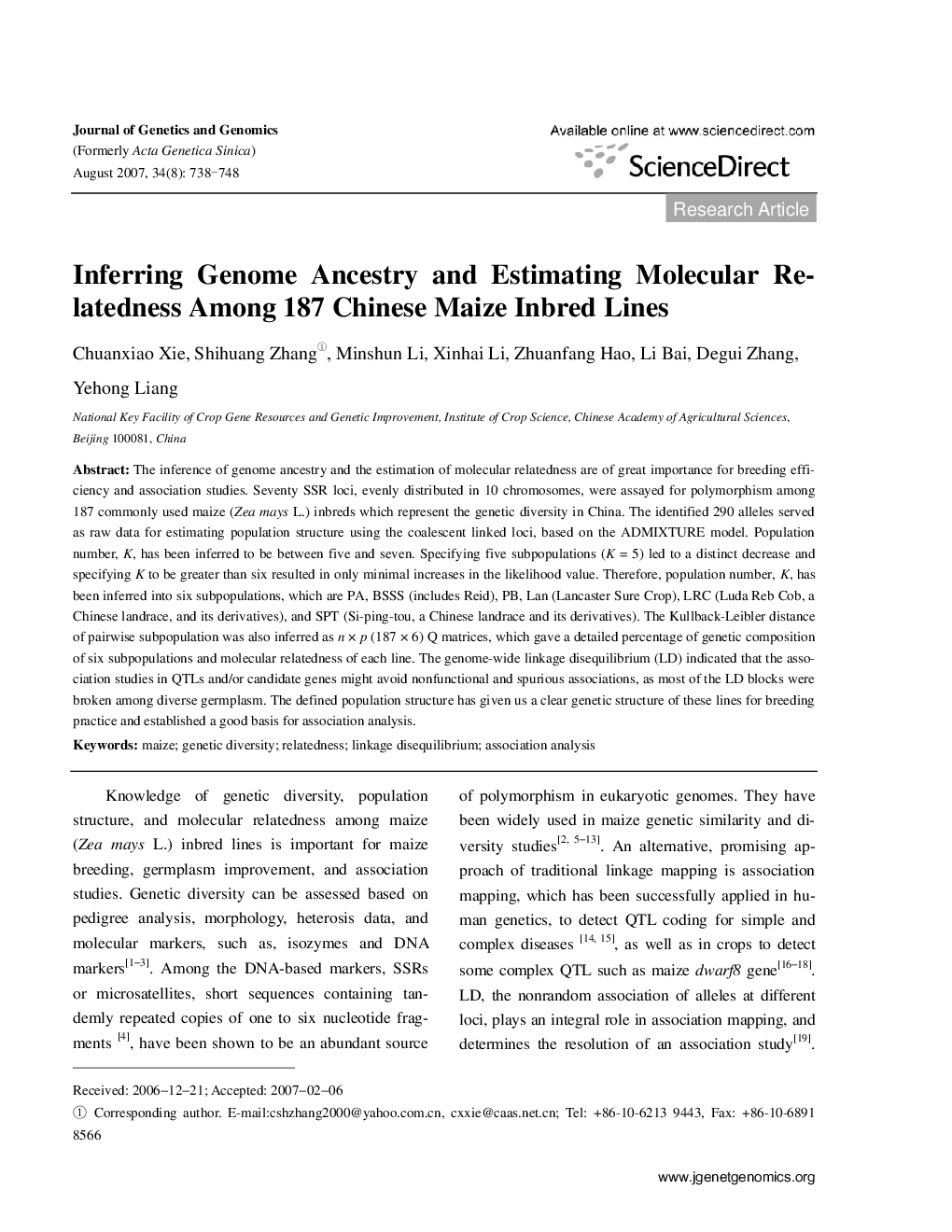| Article ID | Journal | Published Year | Pages | File Type |
|---|---|---|---|---|
| 2788236 | Journal of Genetics and Genomics | 2007 | 11 Pages |
The inference of genome ancestry and the estimation of molecular relatedness are of great importance for breeding efficiency and association studies. Seventy SSR loci, evenly distributed in 10 chromosomes, were assayed for polymorphism among 187 commonly used maize (Zea mays L.) inbreds which represent the genetic diversity in China. The identified 290 alleles served as raw data for estimating population structure using the coalescent linked loci, based on the ADMIXTURE model. Population number, K, has been inferred to be between five and seven. Specifying five subpopulations (K = 5) led to a distinct decrease and specifying K to be greater than six resulted in only minimal increases in the likelihood value. Therefore, population number, K, has been inferred into six subpopulations, which are PA, BSSS (includes Reid), PB, Lan (Lancaster Sure Crop), LRC (Luda Reb Cob, a Chinese landrace, and its derivatives), and SPT (Si-ping-tou, a Chinese landrace and its derivatives). The Kullback-Leibler distance of pairwise subpopulation was also inferred as n × p (187 × 6) Q matrices, which gave a detailed percentage of genetic composition of six subpopulations and molecular relatedness of each line. The genome-wide linkage disequilibrium (LD) indicated that the association studies in QTLs and/or candidate genes might avoid nonfunctional and spurious associations, as most of the LD blocks were broken among diverse germplasm. The defined population structure has given us a clear genetic structure of these lines for breeding practice and established a good basis for association analysis.
